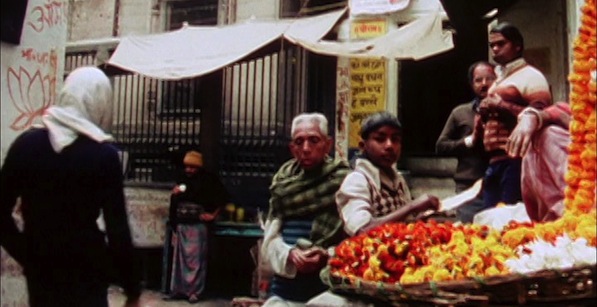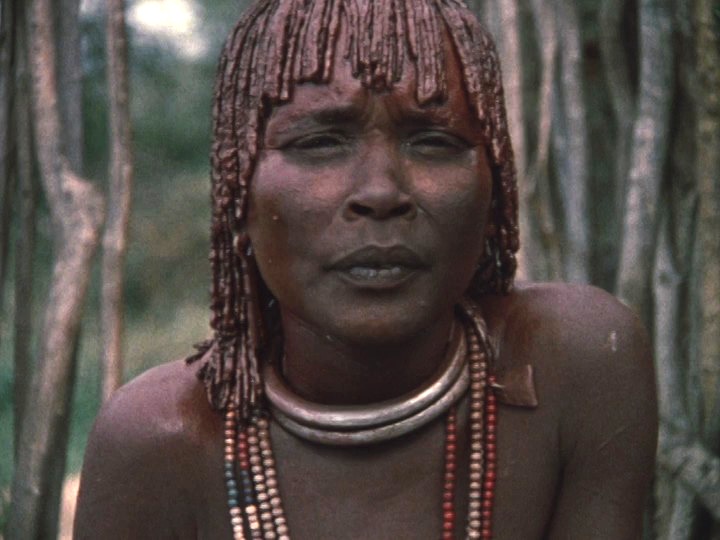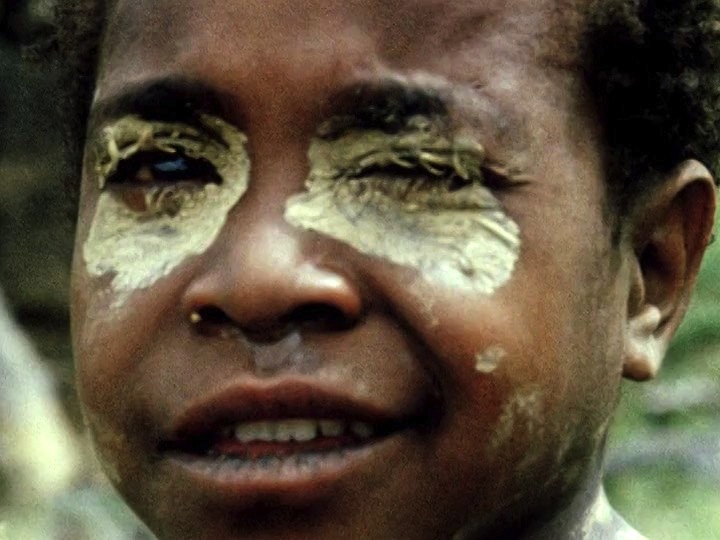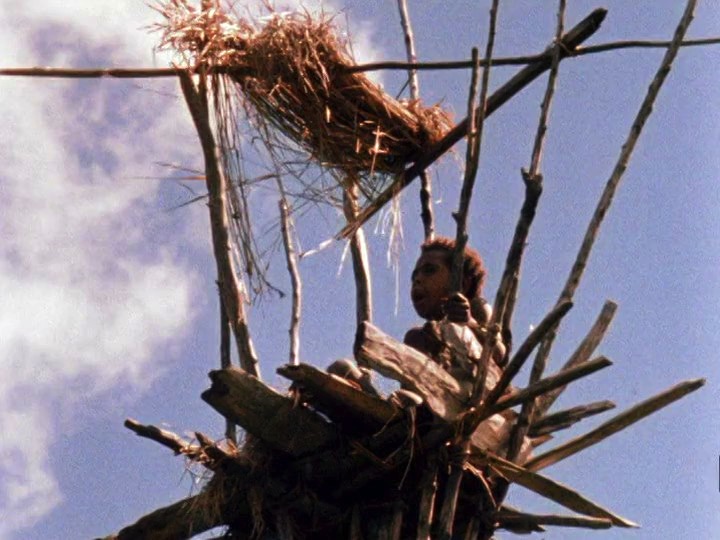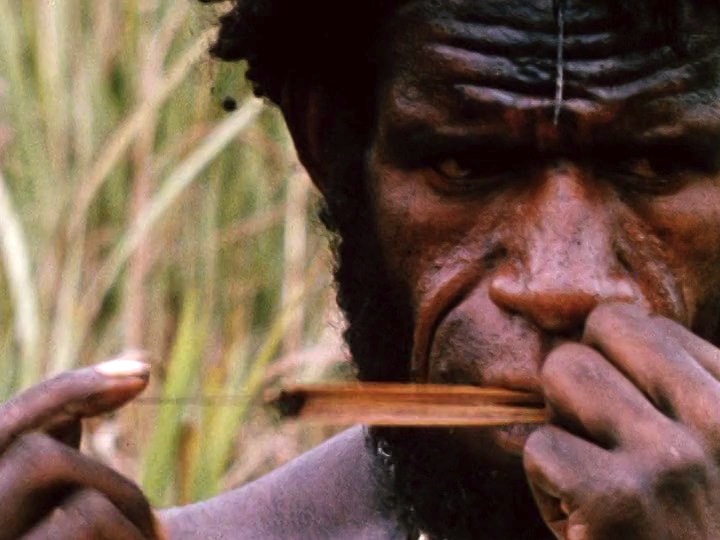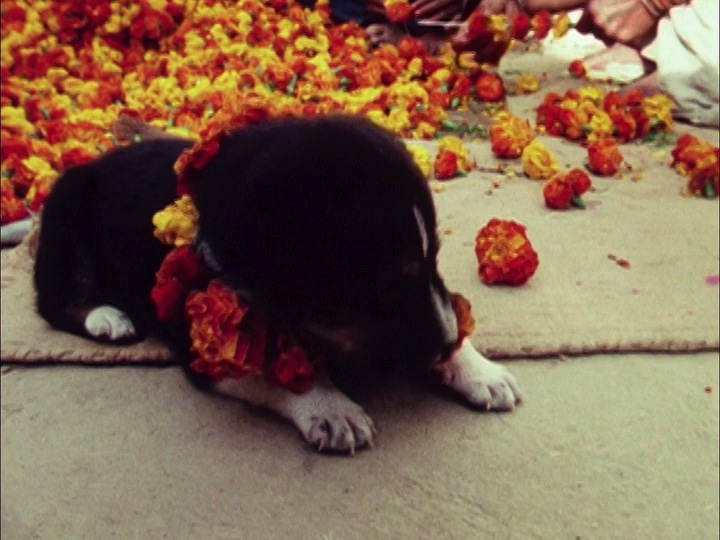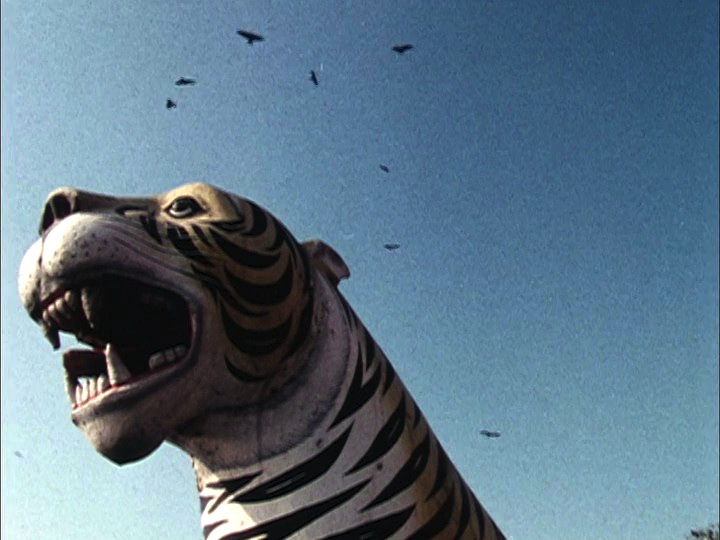The films of Robert Gardner are still not as well known as they perhaps should be, and the fact that we now have the opportunity to watch one of his masterworks, 1986’s Forest of Bliss, streaming, is cause for considerable excitement. However, Gardner’s films can seem daunting at first blush, and not only for the casual viewer. A Harvard anthropologist and ethnographic filmmaker, Gardner’s works were just as confounding for the members of his own profession when he first presented them, in part because he violated certain accepted rules about the documentation on film of cultures under study.
Most conventional ethnographic films explain who and what we are seeing on screen with voiceover and textual inserts. In this way, the sounds and images are processed in advance and subjected to the knowledge base of the academic expert. Like captions in a newspaper, the labels curtail our imagination and our speculation, so that the film is grounded in the denotative transmission of data. The social scientist’s gaze uses the people and places on screen as examples (or samples) of a broader culture, and so their individuality or particularity is diminished. Ours is too. That is to say, our interpretive adventure with the “moment” of cinematic encounter usually becomes reduced to a didactic, one-way event.
Drawing on both modernist film theories and postcolonial philosophies, various critics began to articulate the ways in which this conventional style of ethnographic cinema was a power-laden mode of representation. It’s not just that, in the most basic sense, it usually manifested as white men, with equipment and institutional backing, looking at non-western “Others” and explaining them for other white men. It’s that the “ethnographic gaze” imposed certain frameworks of knowledge onto other cultures, whether or not they were applicable or desirable for the subjects at hand, resulting in a second-order, symbolic violence not unlike that of the original colonists and trophy-hunters of previous centuries.
There were various ways in which filmmakers disrupted this ethnographic gaze. Jean Rouch, for example, collaborated with his Northeast African subjects to create “ethno-fictions” such as Jaguar (1955) and Moi, un Noir (1958), drawn from the travails of their everyday lives but clearly scripted and acted. Timothy Asch and Napoleon Chagnon, in The Ax Fight (1975), filmed a Yanomamö battle ritual and then, showing it four times, reveal how they gradually move from bafflement to deeper understanding. But Gardner’s tack was more radical, if more austere.
Forest of Bliss is about the subjective encounter between Gardner, the perceiving consciousness behind the camera, and the people and events before him. In some of his earlier films, such as 1963’s Dead Birds, Gardner used a somewhat more conventional ethnographic style, applying a voiceover to tell us who and what we were looking at. Still, the images themselves were often poetic and counterintuitive. Gardner would focus on the nimble hands of a weaver, or the vastness of a landscape, to convey an impression of his ethnographic subjects, rather than reducing them to “this” and “that.”
But Forest of Bliss, Gardner’s feature-length film-essay about daily life in Benares, India, is even less denotative. There is no voiceover at all and, apart from an opening title and a two-line quotation from W.B. Yeats, no onscreen text. From an anthropologist’s standpoint, Forest of Bliss was seen as incomprehensible, at least at first. How were we to derive hard academic data from these unformed “rushes?” However, Gardner’s strategy demands a different kind of viewing, one that, ironically, may have been more available to the layperson than the specialist in 1986.
We are thrown into a wave of unfamiliar images and sounds as we watch repetitious actions of men along the Ganges, pouring water onto statues from golden bowls, repeating untranslated phrases. It is only through watching and listening that we intuit that we are watching a Hindu ritual. Gardner is placing us not in the position of the knowing subject (who can benefit from his prior knowledge, “digested” and re-presented in a straightforward film document), but of the newcomer, the stranger who is forced to look, listen and learn.
At the same time, Forest of Bliss is formally articulated, not simply a random collection of Gardner’s filmed encounters. As we watch, we observe that there is a dialectic at work between the events of spirit that take place alongside the Ganges, on the one hand, and the bustle and filth of the central village, packed with people, cows and dogs all jockeying for the satisfaction of purely material needs. Gardner organizes Forest according to visual and sonic motifs—red and orange flowers, clanging bells, the loading and unloading of timber, the paths of funeral processions—that not only afford clarity to this film with no verbal or textual explanations. These signposts also suggest patterns of daily life in Benares, things that Gardner, the outsider, was able to notice and intuit without imposing them as absolute explanatory truths. Even though Forest of Bliss poses formal challenges, it gradually reveals its meanings. In this regard, Gardner presents Benares not as a specimen for his viewers to pick apart and assimilate, but as a phenomenological event that we gradually get to know.
As shocking and disruptive as Gardner’s approach to ethnographic cinema may have sometimes been, one can trace an entire trajectory of cinematic experimentation right back to Forest of Bliss and Gardner more generally. After avoiding the political pitfalls of ethnography for decades, experimental artists such as Chantal Akerman, Trinh T. Minh-ha, Robert Fenz, Peter Hutton, Jonathan Schwartz, Fern Silva and above all the late Mark LaPore, found new ways to move through the world with openness, curiosity and intellectual rigor. And of course, a whole host of experimental ethnographers could be said to work within a post-Gardner framework, both aesthetically and intellectually. Gardner’s leadership of the Harvard Film Study Center from 1957 to 1997 set the stage for the establishment of the Sensory Ethnography Lab in 2006. Recent documentaries such as Sweetgrass (2009), Leviathan (2012), Foreign Parts (2010) and the recent Manakamana (2013) are all different from one another, and indeed quite different from Gardner’s work. But none of them could exist without Gardner’s timely disruption of the ethnographic gaze.

